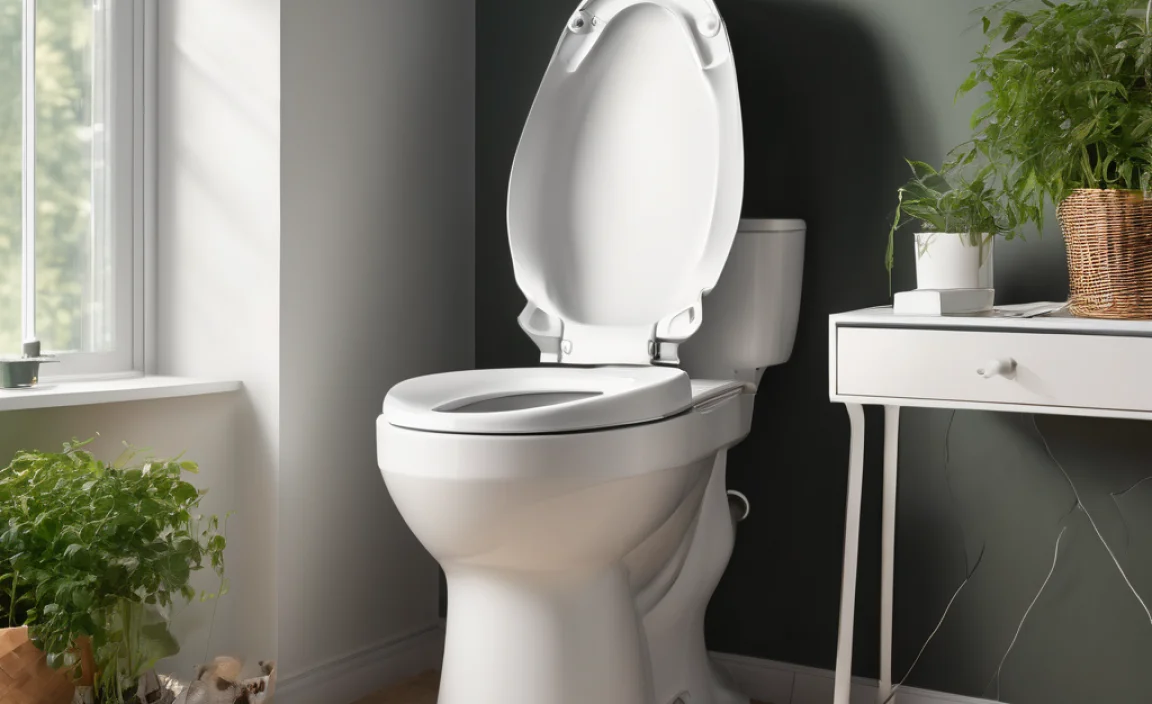Ever wonder if those little critters scurrying near your compost pile are a cause for concern? It’s a common question for anyone getting into composting, and it’s totally understandable to worry about pests. This guide will break down the difference between cold and hot composting, and crucially, whether rats are a real danger with either. We’ll go step-by-step to help you compost with confidence, keeping unwanted visitors at bay. Let’s get composting the right way!
Cold vs Hot Composting & Understanding the Rat Risk
Hey there, fellow composters! Troy D Harn here from TopChooser, ready to demystify the world of composting for you. I know when you start composting, all sorts of questions pop up. One of the biggest, and one that can make you a little nervous, is about animals, specifically rats. Are they attracted to compost? Is it dangerous? And does it matter if your compost is hot or cold?
Let’s clear the air. Composting is awesome for your garden and the planet. But if you’re seeing rats, it’s natural to wonder if you’re doing something wrong or if it’s even safe to continue. I’m here to tell you that with a little know-how, you can compost effectively and safely, and understand the role of rats in the process.
We’ll cover what makes composting “cold” or “hot,” look at how rats fit into the picture, and give you super practical tips to keep your compost working for you, not for pests. Ready to get your compost pile humming and rodent-free? Let’s dive in!
What is Composting? A Quick Refresher
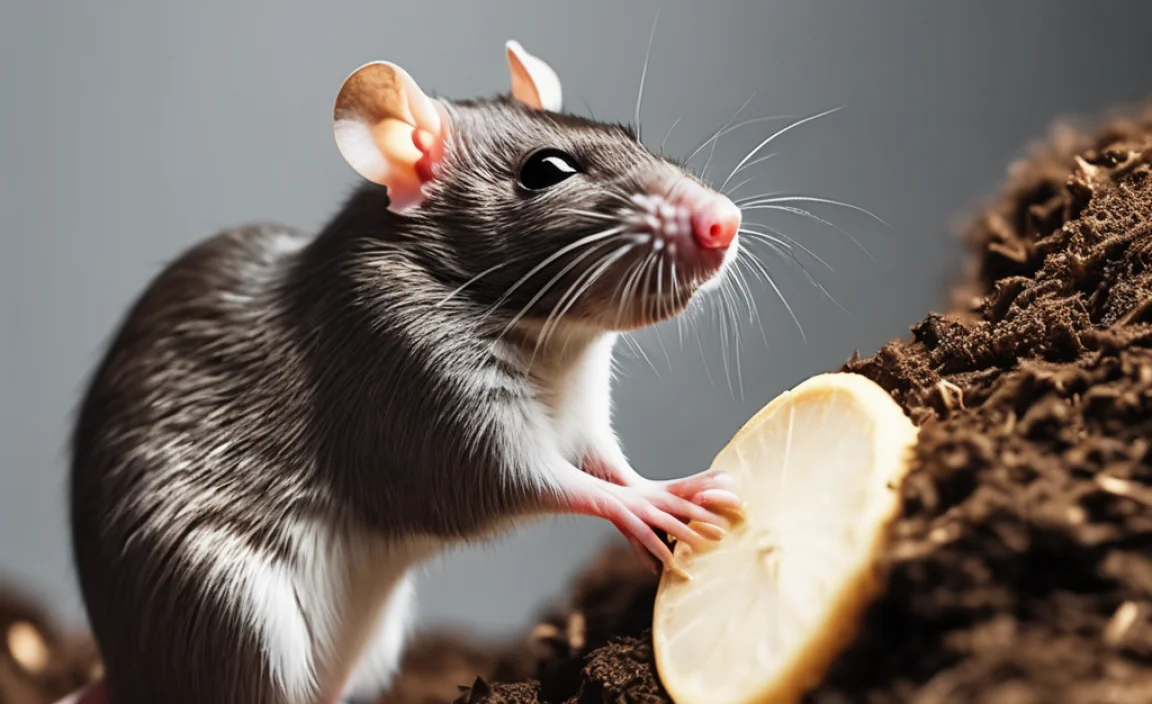
Before we get into the nitty-gritty of hot versus cold, let’s quickly recap what composting is all about. At its heart, composting is nature’s way of recycling. It’s when organic materials – think kitchen scraps and yard waste – break down into a rich, dark, soil-like material called compost, or humus.
This process is carried out by tiny organisms like bacteria, fungi, and even larger ones like worms and insects. They feast on the organic matter, turning it into something incredibly beneficial for your plants. It’s a fantastic way to reduce waste going to landfills and create a free, nutrient-rich soil amendment for your garden.
Understanding Hot vs. Cold Composting
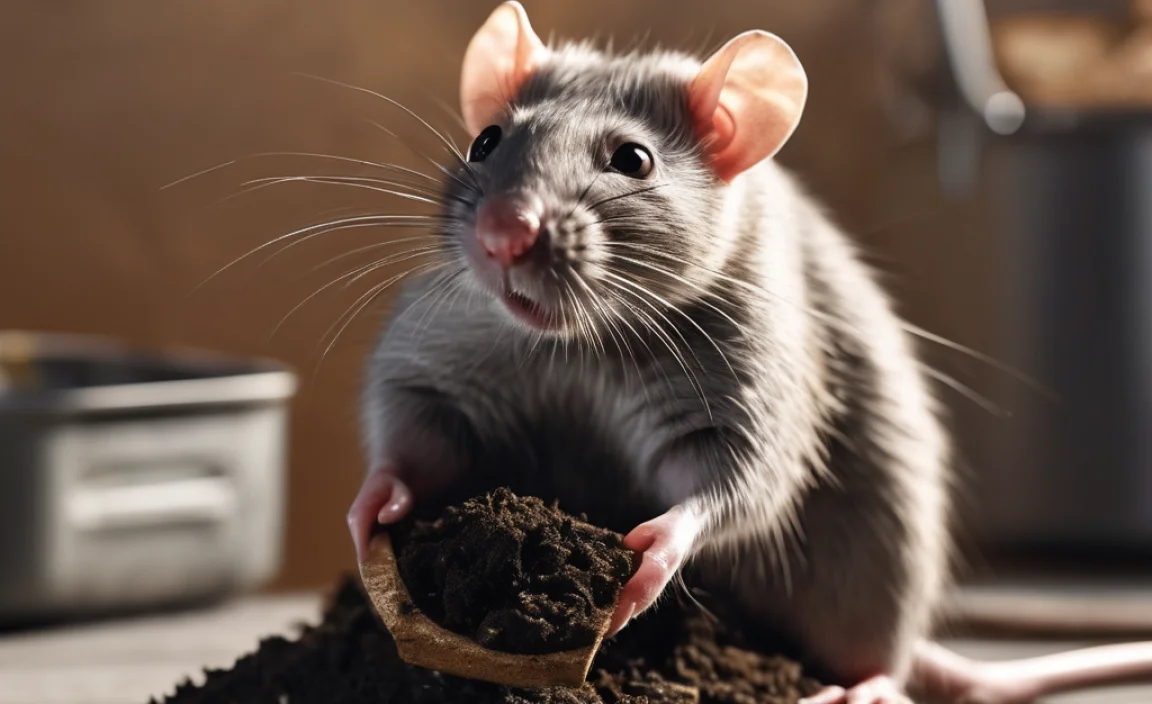
The terms “hot composting” and “cold composting” refer to the temperature that your compost pile reaches and how quickly it breaks down materials. They are two different approaches to achieving the same goal: converting organic waste into valuable compost.
Hot Composting: The Speedy Chef
Hot composting is like the fast-food lane of the composting world. It’s an active process where you carefully manage the ingredients and conditions to create a pile that heats up significantly. We’re talking temperatures between 130°F and 160°F (55°C to 70°C).
This high heat is generated by the rapid work of microorganisms thriving in the perfect environment. This method breaks down materials much faster, often producing usable compost in a matter of weeks to a few months. It’s also very effective at killing weed seeds and pathogens.
Key characteristics of hot composting:
- Requires Balanced Ingredients: You need a good mix of “greens” (nitrogen-rich, like food scraps and grass clippings) and “browns” (carbon-rich, like dry leaves and shredded cardboard). A common ratio is around 25-30 parts carbon to 1 part nitrogen by weight, but a 3:1 or 4:1 by volume green to brown ratio is a good starting point for beginners.
- Needs Airflow: Good aeration is crucial. This means turning the pile regularly (every few days to once a week) to introduce oxygen, which the microbes need.
- Monitors Moisture: The pile should be as damp as a wrung-out sponge. Too dry, and the microbes slow down; too wet, and it can become anaerobic (stinky) and attract the wrong kind of attention.
- Faster Breakdown: Results can be seen in as little as 4-8 weeks, with full compost maturity in 1-3 months.
- High Temperatures: Kills weed seeds and pathogens due to the heat.
For more on the science behind this, the EPA provides excellent resources on composting.
Cold Composting: The Slow Cooker
Cold composting, sometimes called passive composting, is more laid-back. You simply pile up your organic materials and let nature take its course. There’s no active management, no regular turning, and no expectation of high temperatures.
This method relies on slower-acting microbes and can take a much longer time – anywhere from six months to two years to produce finished compost. It’s a great option if you don’t have the time or inclination to manage a hot pile, or if you have a lot of yard waste you want to get rid of without much fuss.
Key characteristics of cold composting:
- Less Management Involved: Just add materials as you get them.
- Slower Decomposition: Can take a year or more for materials to break down fully.
- May Not Kill Weed Seeds or Pathogens: Because it doesn’t reach high temperatures, weed seeds and harmful organisms might survive.
- Can Attract Pests: Less active decomposition means materials sit longer, potentially more appealing to animals if not managed carefully.
- Simpler to Start: Just pile it up!
Cold vs Hot Composting Rats: Dangerous? Let’s Talk Pests
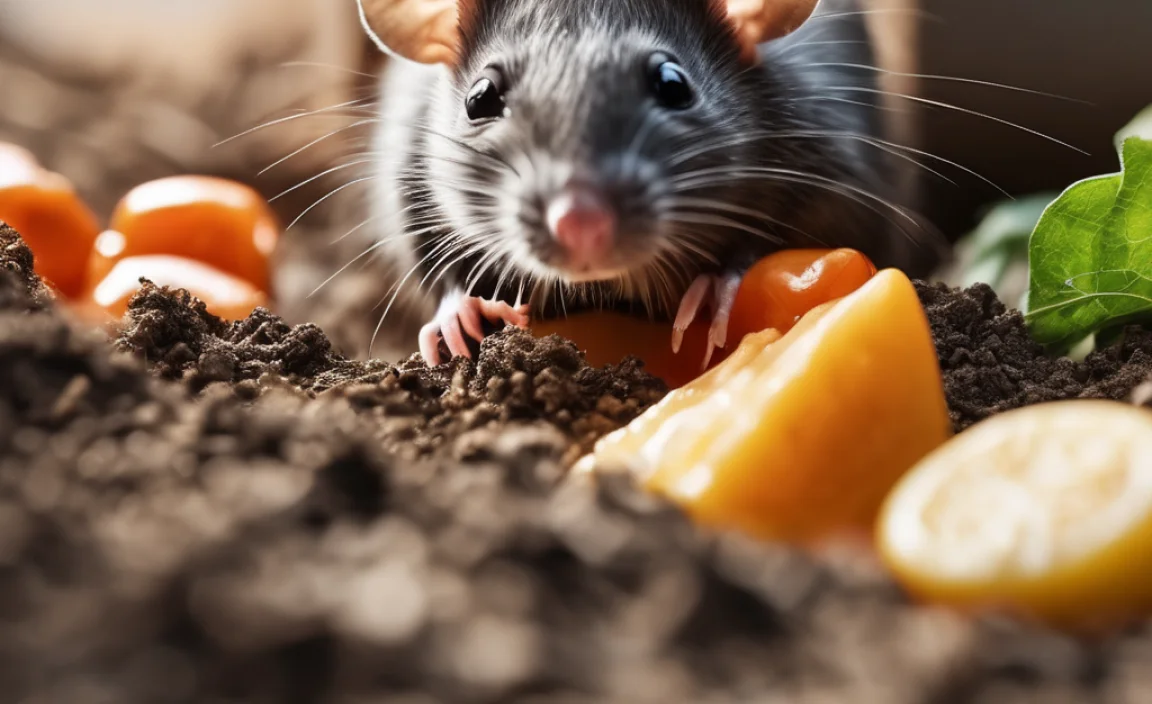
Now, to the big question: “Cold vs Hot Composting Rats: Dangerous?” The answer is nuanced. Rats can be attracted to compost piles, but it’s not a guaranteed outcome, and the risk is generally higher with one method over the other, and it depends heavily on what you put into your pile.
Rats are opportunistic scavengers. They are attracted to a reliable food source. So, the primary driver for rats visiting your compost isn’t so much the “hot” or “cold” nature of the pile itself, but rather the presence of easily accessible, palatable food items that haven’t broken down yet.
When Rats Become a Problem
Rats are generally not a problem in a well-managed, hot composting system. Here’s why:
- The Heat is On! The high temperatures in a hot compost pile are uncomfortable and often lethal to rats and their eggs. They simply won’t nest there or forage for long if the pile is actively hot.
- Fast Material Breakdown: In hot composting, food scraps are rapidly consumed by microbes. They don’t sit around long enough to become an attractive buffet.
- Active Management: Regular turning and proper aeration make it harder for rats to establish themselves. They prefer a stable, undisturbed environment.
Cold composting, on the other hand, can pose a higher risk for attracting rats. Why?
- Slow Decompostion: Unprocessed food scraps and other materials can remain visible and appealing for a long time.
- Lack of Heat: Since the pile doesn’t heat up, it offers a potentially stable and warm nesting site, especially during colder months.
- Undisturbed Nature: If you’re not turning the pile, it provides a quiet, safe haven for pests.
However, it’s crucial to understand that a rat problem is rarely solely due to the compost type. It’s often a combination of factors:
- What’s in the Pile: Certain things are like a five-star meal for rats.
- Rats are Already in the Area: Composting just gives them an opportunity.
- Poor Composting Practices: Leaving food scraps exposed or the pile too wet/soggy.
What Attracts Rats to a Compost Pile? (And What to Avoid!)
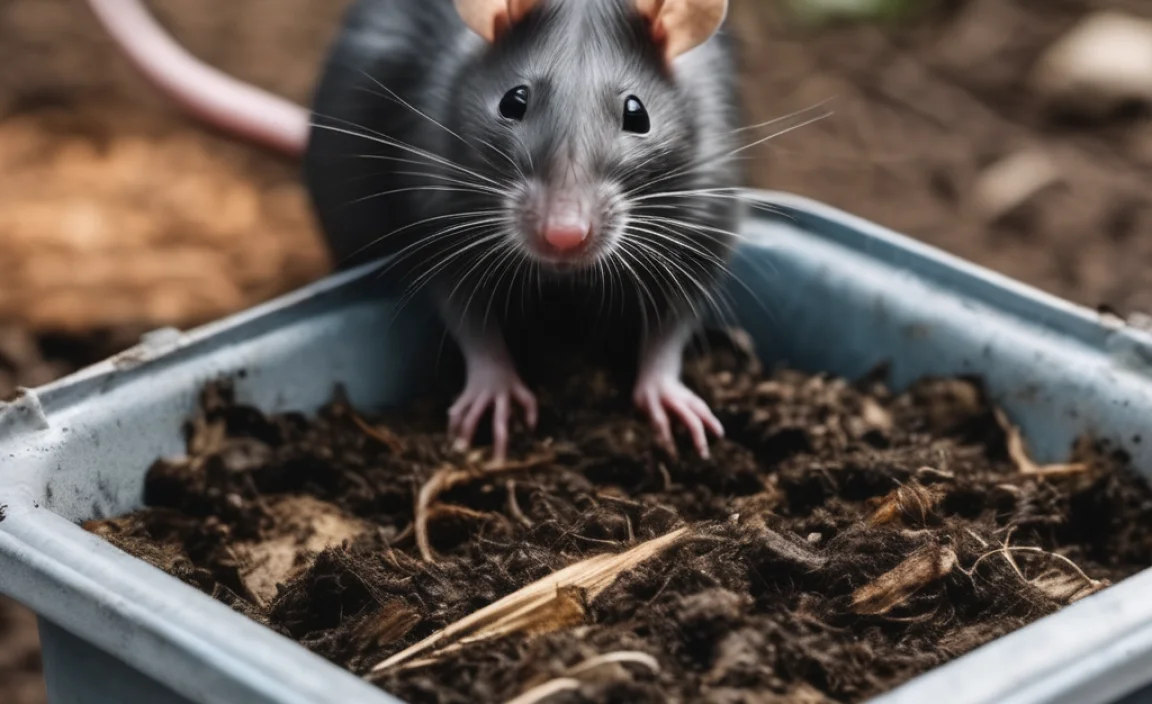
This is key to preventing problems. Rats are attracted to easy meals and a safe place to live. So, what should you avoid putting in your compost if you want to keep rats away?
Good for Compost, Bad for Rats (Generally):
- Coffee Grounds and Tea Bags: Most rats aren’t fans of the bitter taste.
- Eggshells: A good source of calcium, but not a prime food source for rats.
- Yard Waste: Leaves, grass clippings, small twigs – these are fine.
Avoid These Items if Rats are a Concern:
- Meat, Fish, and Dairy Products: These are highly attractive, high-protein foods for rats. They come with strong odors that can draw them in from far away, and they break down slowly, staying appealing for a long time. Experts at nature.com often cite these as primary attractants for rodents in organic waste.
- Oily/Greasy Foods: Similar to meat and dairy, fats and oils are calorie-dense and highly appealing.
- Diseased Plants: While not necessarily an attractant, avoiding them keeps your compost healthier overall.
Key takeaway: If you’re doing cold composting or are in an area with a known rat population, be extra cautious about what you add. Stick primarily to yard waste and coffee grounds if you want to minimize risk.
So, Is Composting with Rats Dangerous?
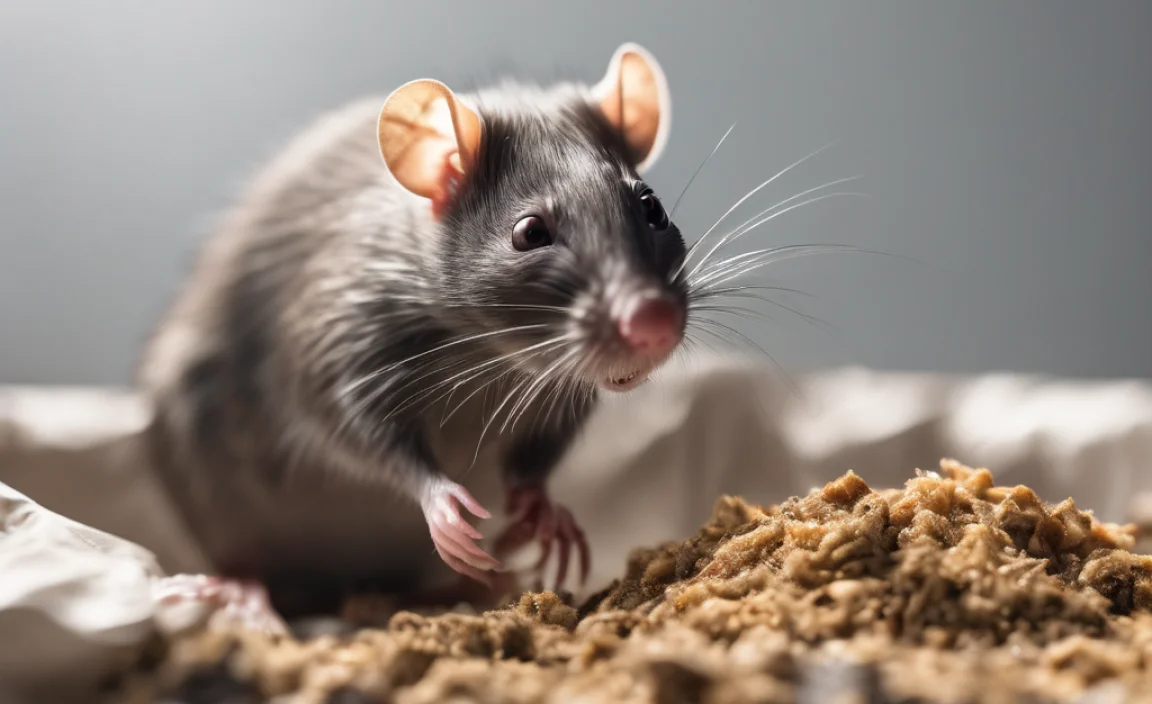
The primary danger associated with rats, including those that might visit your compost, is the potential transmission of diseases. Rats can carry pathogens that can make humans and pets sick. This is why it’s important to always practice good hygiene around compost piles and avoid direct contact with any rodents.
However, the risk is managed through proper composting practices and pest deterrence. A well-managed hot compost pile is unlikely to harbor rats for long, significantly reducing potential exposure. Cold composting requires more diligence to prevent rats from making a home in it.
Think of it this way: if you leave a plate of food out on your counter all the time, you might attract pests. If you eat it quickly or store it properly, the attraction is much lower. Composting is similar.
How to Make Your Compost Pile Less Rat-Attractive
Whether you’re hot or cold composting, or just starting out, here are practical, actionable steps you can take to make your compost pile less appealing to rats and other critters:
1. Use a Compost Bin or Enclosure
This is your first and best line of defense. A sturdy bin can make it much harder for rats to access your compost. Look for options with.
- Solid Sides: Prevents rats from burrowing in from the sides.
- A Secure Lid: Stops them from getting in from the top and also helps keep the pile moist and warm.
- Wire Mesh Underside (if not on a concrete pad): For bins that sit directly on the ground, burying hardware cloth (1/2 inch or smaller mesh) a few inches down and extending it a foot or so out from the base creates an underground barrier.
You can buy these or even build one yourself from wood or pallets. Here’s a great resource for DIY compost bin ideas from University of Maryland Extension.
2. Bury Your Food Scraps
Even if you’re adding kitchen scraps (which is great for hot composting!), you can minimize their appeal to rats by burying them deep within the pile. Dig a hole in the center or side of your compost pile, add your kitchen scraps, and then cover them thoroughly with brown materials (leaves, straw, shredded paper) or existing compost.
3. Maintain the Right Moisture Level
A compost pile that is too wet and soggy can become a breeding ground for pests and also smell bad, which can attract them. Your compost should feel like a wrung-out sponge – damp, but not dripping. If it’s too dry, the decomposition process slows down. If it’s too wet, turn it and add more brown materials to absorb excess moisture.
4. Turn Your Compost Pile Regularly (Especially for Hot Composting)
While not strictly necessary for cold composting, regularly turning your compost pile (every 1-2 weeks) is crucial for aeration and speeding up decomposition. This activity also discourages pests from settling in.
5. Balance Your Greens and Browns
As mentioned earlier, a good balance of nitrogen-rich “greens” (food scraps, grass clippings) and carbon-rich “browns” (dry leaves, shredded cardboard, straw) creates ideal conditions for the microbes doing the work. If your pile is too heavy on greens, it can become a smelly, mushy attractant. Too many browns and it will be dry and slow.
6. Avoid Problematic Items
This is a big one. As we discussed, steering clear of meat, fish, dairy, and oily foods will significantly reduce the attraction for rats and other scavengers.
7. Keep the Area Clean
Don’t let compost materials or scraps accumulate around the outside of your bin. Clean up any spills immediately. Keep pet food bowls empty and secure garbage bins.
8. Consider a Tumbler Composter
Compost tumblers are enclosed, rotating bins that are excellent at deterring pests. Because they’re sealed and often raised off the ground, rats have a very hard time getting in. They also make turning the compost super easy!
Comparing Composting Methods for Pest Control
To help you visualize, let’s put the pest-related aspects side-by-side.
| Feature | Hot Composting | Cold Composting |
|---|---|---|
| Temperature | Reaches 130-160°F (55-70°C) | Remains at ambient temperature |
| Rat Attraction Risk | Low (heat deters them, rapid breakdown of attractants) | Higher (materials sit longer, no heat deterrent) |
| Breakdown Speed | Fast (weeks to months) | Slow (6 months to 2+ years) |
| Management Required | High (balancing, turning, moisture) | Low (primarily adding materials) |
| Best for Avoiding Rats | Yes, due to heat and speed | Needs careful management of ingredients and enclosure |
| What to Compost (Rat Focus) | Can handle kitchen scraps if managed properly (burying); generally safer for rapid breakdown. | Best to stick to yard waste, paper, coffee grounds; avoid meat, dairy, oils to minimize attraction. |
| Need for Enclosure | Recommended for faster processing and general control. | Highly recommended for deterring pests. |
Tools and Supplies for Rat-Resistant Composting
Here are some helpful items to consider if you’re aiming for a pest-free composting experience:
- Compost Bin: Choose a sturdy, enclosed bin. Options include plastic bins with lids, wooden bins with hardware cloth lining, or tumblers.
- Hardware Cloth: If building your own bin or lining an existing one, 1/2-inch or 1/4-inch galvanized hardware cloth is excellent for preventing burrowing.
- Compost Thermometer: Essential for monitoring the temperature if you’re aiming for hot composting.
- Pitchfork or Aerator Tool: For turning the compost pile. An aerator tool is easier for beginners and less disruptive than a pitchfork.
- Watering Wand or Hose: To maintain the right moisture level.
- Shredder (Optional): For breaking down larger brown materials like cardboard and twigs, which helps them decompose faster.
- Gloves: Always a good idea for hygiene when handling compost.
Investing in a good bin is often the most effective first step in preventing rat issues. A sturdy Gardners.com buyer’s guide can help you choose the right type.
Composting and Rats
Let’s clear up some other common questions you might have.
Can rats live in a cold compost pile?
Yes, they can. Cold compost piles don’t generate heat, which can make them a comfortable and

